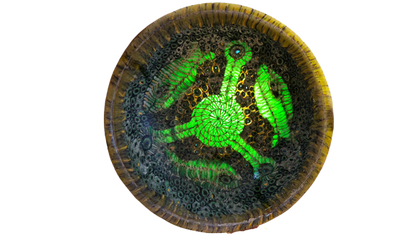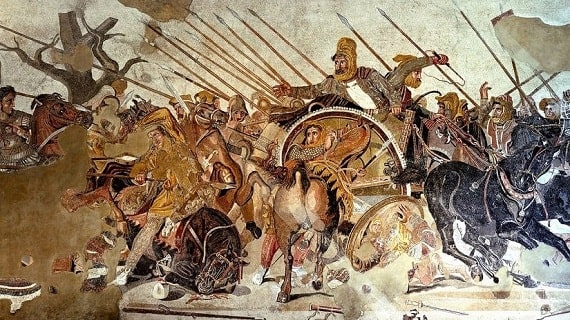Phoenician glass mosaic bowl found with Rover UC in Middle East

Detected with
OKM Rover UC
Depth: 2.0 m (6.6 ft)
Region: Syria
Size: 14.5 cm x 4.5 cm | 5.7" x 1.8" (DxH)
Weight: 145 g | 5.1 oz
Treasure hunting in the Eastern Mediterranean with Rover UC
Usually, the finder of the presented treasure travels with his metal detector Rover UC in the south of Syria - in a region, in which numerous gold treasures from the time of the Ottoman Empire are suspected. The lightweight and inconspicuous metal detector Rover UC also allows treasure hunting in rough terrain, since only a smartphone is required for the first evaluation of the measured data. Without much preparation, the metal detector is immediately ready-to-use and does not only detect metals, but also distinguish between ferromagnetic and non-ferromagnetic metals. Instead of encountering the hoped-for gold deposits, the Rover UC detected a cavity while treasure hunting in the Middle East: A hidden burial chamber at 2 m depth was found in an ancient temple ruin. The treasure hunter was astonished as his discovery revealed valuable objects that are not made of gold. With the 3D ground scan function, his Rover UC tracked down the underground vault and led the treasure hunter to a successful discovery. The smartphone with the Rover UC App finally became a light source to illuminate the treasure find.

Antique glass mosaic bowl - an outstanding find

Rediscovered origins of glass art in the Mediterranean
The glass production was originally brought to Egypt by craftsmen from Mesopotamia. Syria and Mesopotamia became important centres of glass production in the Mediterranean region in the 9th century BC. In the Hellenistic period, i.e. in the reign of Alexander the Great, Egyptian glassworks in Alexandria again acquired a leading role. From there the technique of glass processing finally reached Rome. Early on it was possible to make open vessels such as jugs and bowls from colored, translucent glass stones. Together with the mosaic technique, complex patterns were created, as the presented treasure trove shows. By fusing glass threads together, further forms and stripes could be created.
Phoenicia* and Glass Art


In its peak between 1200 and 900 BC, Phoenicia dominated the entire Mediterranean region as far as the Atlantic and was thus the greatest trading and naval power of antiquity. Phoenicia was famous in the ancient world mainly for its textiles and dyes (purple), objects made of precious metals, ivory carvings and glassware and had a significant influence on Greek art. Impressed by the production of glass, art spread throughout the Roman Empire and brought glass objects via the Silk Road to China.
Phoenician, Babylonian, Hellenistic, or Roman?
Phoenician art combines Mesopotamian and Egyptian as well as Aegean and Hittite style elements with indigenous forms and techniques. The numerous influences can be traced back to the eventful history of Phoenicia under various rulers:- 2500 B.C. Phoenician city states under the influence of the Sumerians and Akkadians (Babylonia)
- 1800-1400 BC under the influence of Egypt
- 1100 BC Independence of the city-states Byblos (Djebeil), Arados (Arwad), Sidon (Saida), Tripoli, Tyros (Sur) and Berytos (Beirut) under alternating rule
- 900 B.C. Conquest by Assyrians
- 800-539 BC Integration into the Babylonian Empire
- 539-333 BC Integration into the Persian Empire
- 333/332 BC Hellenistic influence (under Alexander the Great) and gradual incorporation into Seleucid empire
- 64 BC Integration into the Roman province of Syria
It is up to the experts, who are able to take a closer look at this treasure find, to decide which period the artistically decorated glass mosaic bowl dates from.
* Phoenicia was located on the east coast of the Mediterranean Sea, today largely bordered in Lebanon by the Lebanon Mountains to the east, Mount Carmel to the south and the Eleutheros River (today Kebir) to the north.
Get Rewarded for Your Treasure Finds
You have also made discoveries and detected amazing artifacts and would like to share them (anonymously)? We look forward to reading and publishing your success stories!


